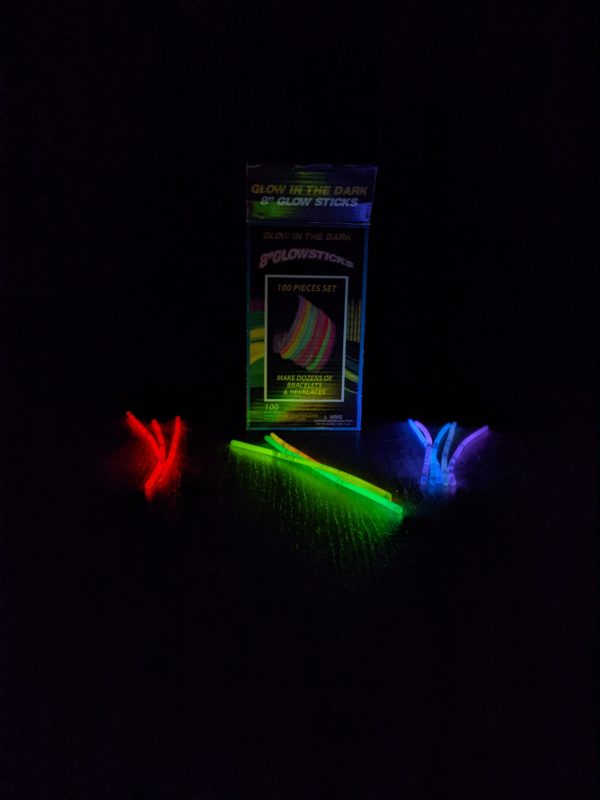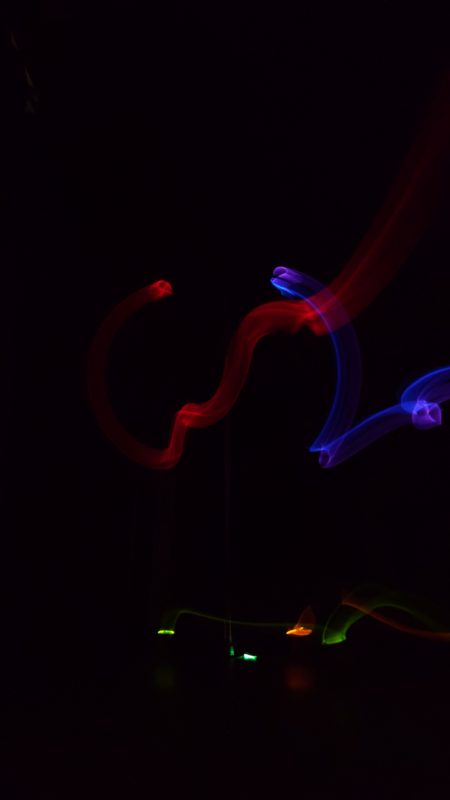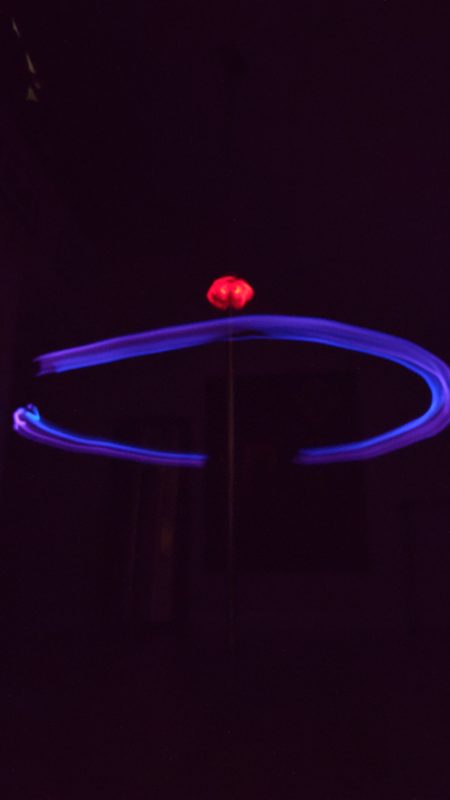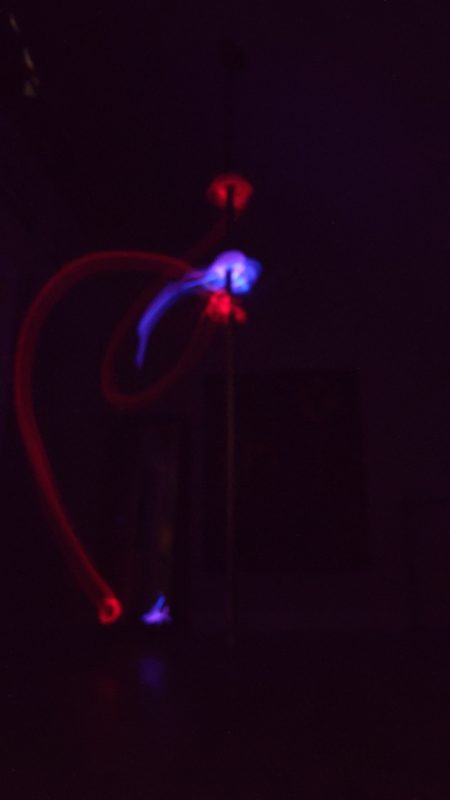I am very excited for this light paint exploration. Lucky for me, I already owned all the equipment I needed in order to test this concept out. All I needed was my Pixel 4 phone, a tripod, and glow sticks! The camera on my phone did not allow for manual configuration, so I downloaded the Lite version of “Manual Camera DSLR” by Lenses, Inc. After reading through some tutorials, I began to experiment with the sliders for shutter speed and ISO. From my basic understanding, increasing the shutter speed allows for a longer period for the image sensor to take in light. This is the main component to the light paint streak effect. ISO is a measure of the sensitivity to light. This helps to brighten or darken images. This metric is important because in light painting you want to be bright enough to display the light sources but dark enough to not pick up noise from the background.
So after some tinkering, here’s what I ended up with:


Snow angel initial attempt

Walking around pole

Snow angel

Climbing

Dramatic climbing
This was very fun to make. From what I’m seeing, my phone isn’t going to cut it. The focus is less than ideal and maybe with a better camera, I’ll pick up less background noise. It seemed that shortening the shutter speed to 5 seconds helped get rid of some of the noise. 5 seconds is not a lot of time to move so I’m hoping I can potentially achieve this same effect with brighter light sources and lower ISO. Another issue is that all the surrounding walls are white, therefore contributing to the noise. If necessary, I have access to a ladder and can cover the walls with matte black paper ($20.99 on Amazon listed below).
Going through this process has made me think more about what I want the focus of this project to be. When I move too quickly, I disappear from the image. For most of these, you have no idea what I did to create them. This is fine, but I think I would like to showcase dancing as well. I could also achieve this by having a side-by-side video of the moves that produced these patterns. Part of the appeal of light painting is seeing the process!
The plan going forward is to continue experimenting with brighter light sources, different perspectives, and with a high definition camera. My good friend Dave, who does photography for the military, will lend me a Canon 70D camera and give me a crash course on setting up a good shot. I will need to practice getting a good video in the dark as well. In the future, if these don’t turn out as well as I would like, then I may have to learn some photo and video editing. I have about 50 glowsticks left to practice with, and I will be buying brighter arm bands as well ($19.95 on Amazon). There are a lot of variables to play with and if this is the starting point, I’m excited to see where this goes.
Shopping List:
https://www.amazon.com/Wristband-Bracelets-Armbands-Flashing-Festivals/dp/B07ZP38LSD/ref=sr_1_10
https://www.amazon.com/Black-Paper-Roll-1800-Inches/dp/B07MW8VNYV/ref=sr_1_1_sspa (Potentially)
Like I said in class I think it would be very cool to have quick light flashes on you while you are taking the photo so we could see you doing some of the movements it takes to make the paths of light we see. It also allows for us to imagine what is going on in between the spaces where you are not shown. If you don’t want just the typical movements of pole dancing then you could try making pictures like a giraffe or DNA. Taking advantage of the unique space would allow you to draw some pretty cool designs.
One idea I had pop up late after class, in which I am not sure how practical it may be for you. But if you get a longer time to work with via the better equipment, you could do some images where you do one move in red, then rotate to a different color for the next move, and so on so forth so you can maybe convey certain movements you couldn’t with an array of other colors.
I love how these came out, even if the quality is not perfect yet, its cool to see the process of different settings and how they affect what the image looks like. I’m interested to see what the next iteration of these photos look like with the fancy camera and brighter lights. It would be cool if you overlapped some pictures together and kind of make a story in one picture, but that might be too much in one piece.
I remember how you were saying that you wanted to show the choreography even though it would be too dark – so the only thing I would suggest is to do like a timelapse/sped-up video of your choreography. Even if we won’t be able to see you, the class could still see the different movements from the lights.